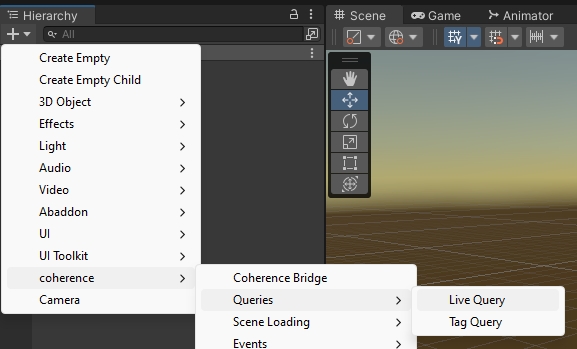CoherenceLiveQuery
CoherenceLiveQuery is a component used to create an area of interest, that is, an area of the world that the Client is interested in for the purpose of network traffic.
Having at least one query in the scene is necessary to receive any network update!
Adding a LiveQuery to the scene

A LiveQuery defines the area of interest. It is defined by its Transform's position and its extent (half the side of the cube).

There can be multiple LiveQueries in a single scene.
Moving a LiveQuery
A common approach is to place a CoherenceLiveQuery component on the camera and adjust the extent to reach as far as the far clipping plane or visibility distance.
Moving the GameObject containing the LiveQuery notifies the Replication Server that the query for that particular client has moved.
Try it out yourself
Go to our First Steps interactive demo and see it in action in scene 3 (Areas of Interest). There is also has an accompanying explanation for the curious.
Last updated
Was this helpful?

